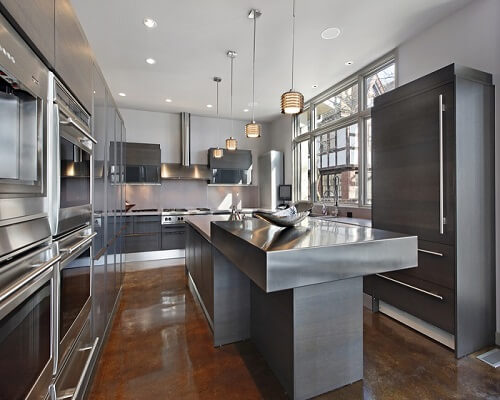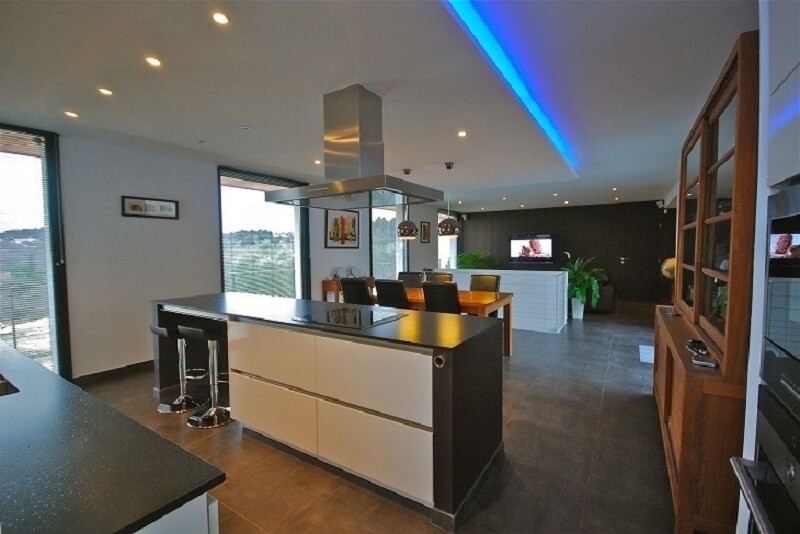Beautiful, functional, and long-lasting cabinets are an integral part of any well-designed kitchen or bathroom. But how do you decide on the best material for your custom cabinetry? Should you embrace the streamlined Scandinavian charm of a softwood, or invest in the durability of hardwood? Perhaps a sleek laminate or robust metal fits your aesthetic and functional requirements? Or maybe, you’re considering environmentally friendly options like bamboo? Navigating the world of cabinet materials can seem overwhelming, but fear not! This comprehensive guide is designed to help you understand and choose the right material for your custom cabinets.
Choosing the right cabinet material is not just about enhancing your home decor. It also involves considering factors such as cost, durability, maintenance, and environmental impact. The right cabinetry can incite admiration from visitors, add equity value to your home, and overall make your everyday life more organized and easier.
In this post, we dive deep into the practical and aesthetic aspects of various cabinet materials. From the diverse species of wood to cutting-edge synthetic options – hold on tight because we’re taking a journey through the world of cabinetry materials, their pros and cons, application in different styles, and giving you the facts to help transform your space into your dream interior.
Understanding Cabinet Materials: The Basics
Before we delve into the specific types of cabinet materials, it’s important to understand that cabinets generally consist of two parts: the box and the doors. The material chosen for both isn’t always the same, so you might want to consider a combination. Now, let’s get into your options.
A major contender in cabinet making is wood, with two main types – hardwood and softwood. Hardwoods, sourced from deciduous trees like oak and maple, are known for their durability and high quality. Softwoods come from coniferous trees such as pine, offering a cheaper but equally attractive option.
Next in line is engineered wood – mostly plywood and particleboard. Plywood is versatile and reliable, while particleboard is an economical choice with a smooth finish.
Recently, laminate and thermofoil have also gained popularity for their affordability and the wide variety of designs. Metalled cabinets, although less common for residential projects, offer a modern, industrial aesthetic and exceptional durability.

Wood: The Classic Choice
Wood is a timeless material that offers authenticity, a wide colour palette, and notable resistance. The choice mostly lies between hardwood and softwood.
Hardwoods like oak, cherry, and maple provide an elegant look and are highly resistant to damage. However, they have a higher price tag. Softwoods such as pine offer a rustic aesthetic and are less expensive but are prone to denting and scratching.
In this era of sustainability, it’s also important to take the environmental impact of your choice into consideration. While hardwoods take longer to grow, making them less sustainable, many manufacturers are adopting responsible sourcing practices.
Engineered Woods: A Modern Alternative
Engineered wood, such as plywood and particleboard, are cost-effective alternatives to solid wood. Plywood cabinets are durable, resist warping, and provide good value for money. However, particleboard is a more affordable alternative that offers a contemporary look and feel.
Despite these advantages, engineered woods may not have the charm of real wood and can suffer from moisture damage over time, so their ‘longevity quotient’ is something to consider seriously.
Metal Cabinets: Durable and Visually Stunning
While not the most conventional choice for residential homes, metal cabinetry brings a unique, modern aesthetic to your space.
Metal cabinets are highly durable, heat and water-resistant, and easy to clean – making them a practical choice for the kitchen. However, the cost can be higher, and over time they can be prone to scratches and dents.
Synthetic Materials: Affordable and Diverse
Laminates and thermofoil offer a wide variety of patterns and colours, resistance to moisture, and come at a lower cost than their wooden counterparts.
However, these materials can peel or chip over time, and the repair process is not as straightforward as it would be with wood. They have their audience among homeowners seeking economical and versatile options.
The Environmental Aspect of Your Decision
No conversation about material choice is complete without considering its environmental impact. From sustainably sourced hardwoods to recycled metal options, it’s worth exploring eco-friendly alternatives.
Remember that lower costs sometimes come with a higher environmental price. Do your research to make sure you’re making a sustainable choice as well as a stylish one.
Conclusion: Your Cabinet, Your Choice
Choosing the right material for your custom cabinets is a multi-faceted decision requiring a balance of aesthetics, budget, durability, and environmental impact.
While wood, the classic choice, offers warmth and authenticity, engineered woods can be a cost-effective alternative. High durability and a modern aesthetic can be found in metal cabinets, while the variety and affordability of synthetic materials also have their draw.
Remember, quality should never be compromised for the sake of budget – these cabinets need to stand the test of both time and trend. In the end, the decision is deeply personal and unique – just like your home!








